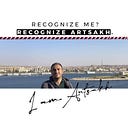Artsakh the Unforgettable Armenian Heritage
Artsakh, officially the Republic of Artsakh, is a presidential democracy with a unicameral legislature. It is reliant on and closely integrated with Armenia, in many ways functioning as part of Armenia. It is very mountainous, averaging 1,100 meters (3,600 ft.) above sea level, its population is 99.7% ethnic Armenian, and the primary spoken language is Armenian. The population is overwhelmingly Christian, most being affiliated with the Armenian Apostolic Church. Several historical monasteries are popular with tourists, mostly from the Armenian diaspora, as most travel can take place only between Armenia and Artsakh. It has close relations with Armenia and uses the same currency, the dram.
Etymology
According to scholars, inscriptions dating to the Urartian period mention the region under a variety of names: "Ardakh", "Urdekhe", and "Atakhuni". The classical Greek historian Strabo refers to an Armenian region that he calls "Orchistene", which is believed by some to be a Greek version of the old name of Artsakh. According to another hypothesis put by David M. Lang, the professor of Caucasian studies, the ancient name of Artsakh possibly derives from the name of King Artaxias I of Armenia (190–159 BC), founder of the Artaxiad Dynasty and the kingdom of Greater Armenia. The Folk etymology holds that the name is derived from "Ar" (Aran) and "tsakh" (woods, garden) (i.e., the gardens of Aran Sisakean, the first nakharar of northeastern Armenia).
Early history
The earliest record of the region covered by modern-day Artsakh is from Urartian inscriptions referring to the region as Urtekhini. It is unclear if the region was ever ruled by Urartu, but it was close to other Urartian domains. It may have been inhabited by Caspian tribes and/or by Scythians.
Urartu finally collapsed with the rise of the Median Empire, after decades of raids by the Cimmerians, Scythians, and the Medes. The geopolitical region previously ruled as Urartu re-emerged as Armenia. By the fifth century BC, Artsakh was part of Armenia under the Orontid Dynasty. It continued to be part of the Kingdom of Armenia under the Artaxiad Dynasty, under which Armenia became one of the largest kingdoms in Western Asia. At its greatest extent, the Great King of Armenia, Tigranes II, built several cities named after himself in regions he considered particularly important, one of which was the city he built in Artsakh.
What makes Artsakh a precious region for the Armenian nation?
1. Sites and monuments
2. Natural Resources
Sites and monuments
Artsakh has been called an open-sky treasure-house of various forms of Armenian architecture. It hosts several thousand architectural artifacts and historical monuments in a larger sense. Additionally, ecclesiastical structures, this number include samples of civil architecture, ancient castles, and fortresses as well as numerous khachkars. Artsakh’s art in the middle ages was ecclesiastical architecture: churches, cathedrals, chapels, and monasteries. Most other forms of art in that period, including illuminated manuscripts, khachkars -unique Armenian stone slabs with engraved crosses- and mural paintings were likewise tied to Artsakh’s religious life and its primary institution, the Armenian Apostolic Church.
There are several monuments and churches there including Ghazanchetsots Cathedral in Shushi, The anonymous hermitage of Dadivank, and Tigranakert.
Check https://monumentwatch.org/
Natural Resources
Artsakh is rich in natural resources of precious and semi-precious metals, such as gold and copper, and other natural resources. Copper and gold mining has been advancing since 2002 with the development and launch of operations at the Drmbon deposit. Approximately 27-28 thousand tons (wet weight) of concentrates are produced with an average copper content of 19-21% and gold content of 35-55 g/t. The mine is one of the biggest taxpayers of Artsakh and employs 1200 workers of which 65% are local citizens.
The current situation
• Government and politics
Artsakh is a presidential democracy, the executive power is now residing with the President of Artsakh who is both the head of state and the head of government. The legislative branch of government is composed of both the Government and the National Assembly. He is directly elected for a maximum of two-consecutive five-year terms. The current President is Arayik Harutyunyan “Free Motherland party” who was sworn in on 21 May 2020.
• Party life
Five parties have members in the parliament: the Free Motherland party has 15 members, ARF has 8 members, the Democratic Party of Artsakh has 7 members, Movement 88 has 2 members and the National Revival party has one member.
The National Assembly (Azgayin Zhoghov) has 33 members who are elected for a five-year term by Party-list proportional representation. Artsakh has a multi-party system, with numerous political parties in which no one party often has a chance of gaining power alone, and parties must work with each other to form coalition governments.
• Relations
According to Human Rights Watch, "from the beginning of the Karabakh conflict, Armenia provided aid, weapons, and volunteers. Armenian involvement in Artsakh escalated after a December 1993 Azerbaijani offensive. The Republic of Armenia began sending conscripts and regular Army and Interior Ministry troops to fight in Artsakh." The politics of Armenia and Artsakh are so intertwined that Robert Kocharyan served as the first President of the Artsakh Republic, from 1994 to 1997, then as prime minister of Armenia from 1997 to 1998, and then as the second President of Armenia, from 1998 to 2008.
